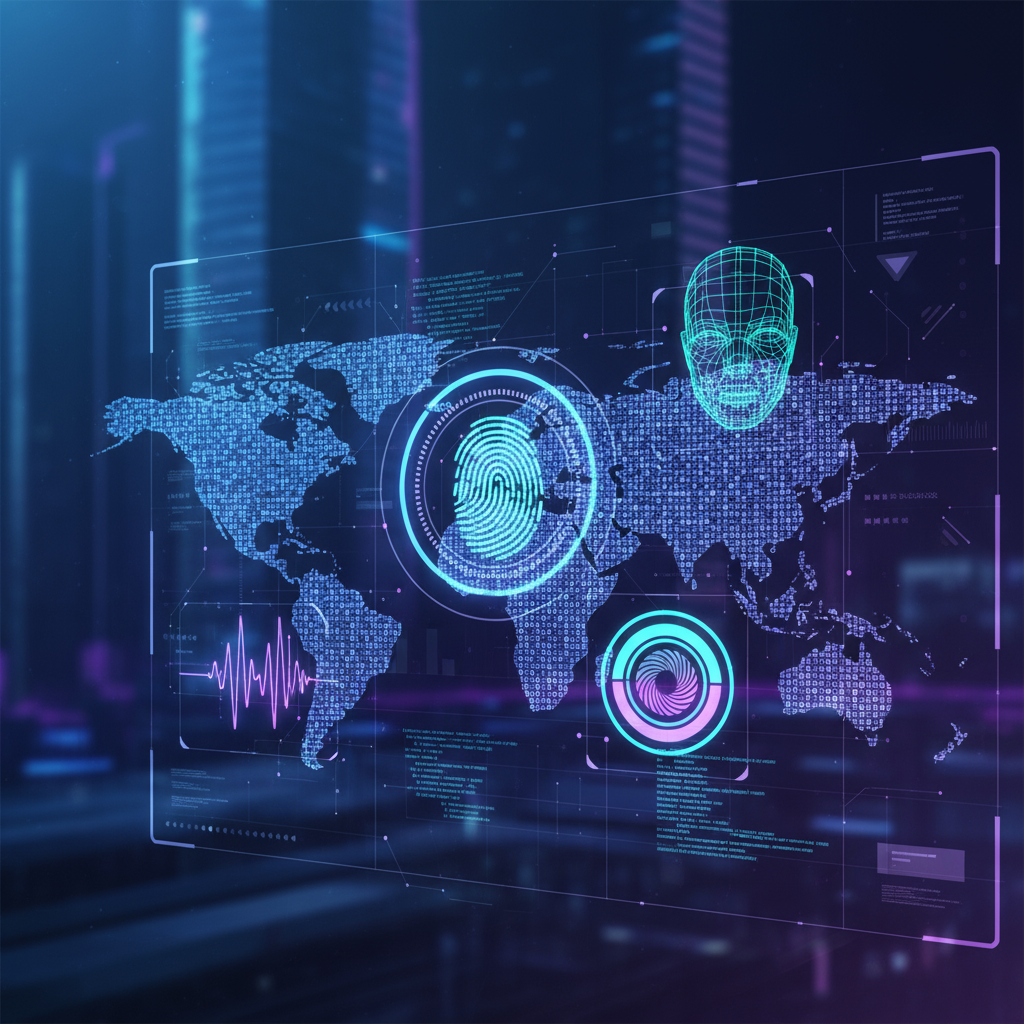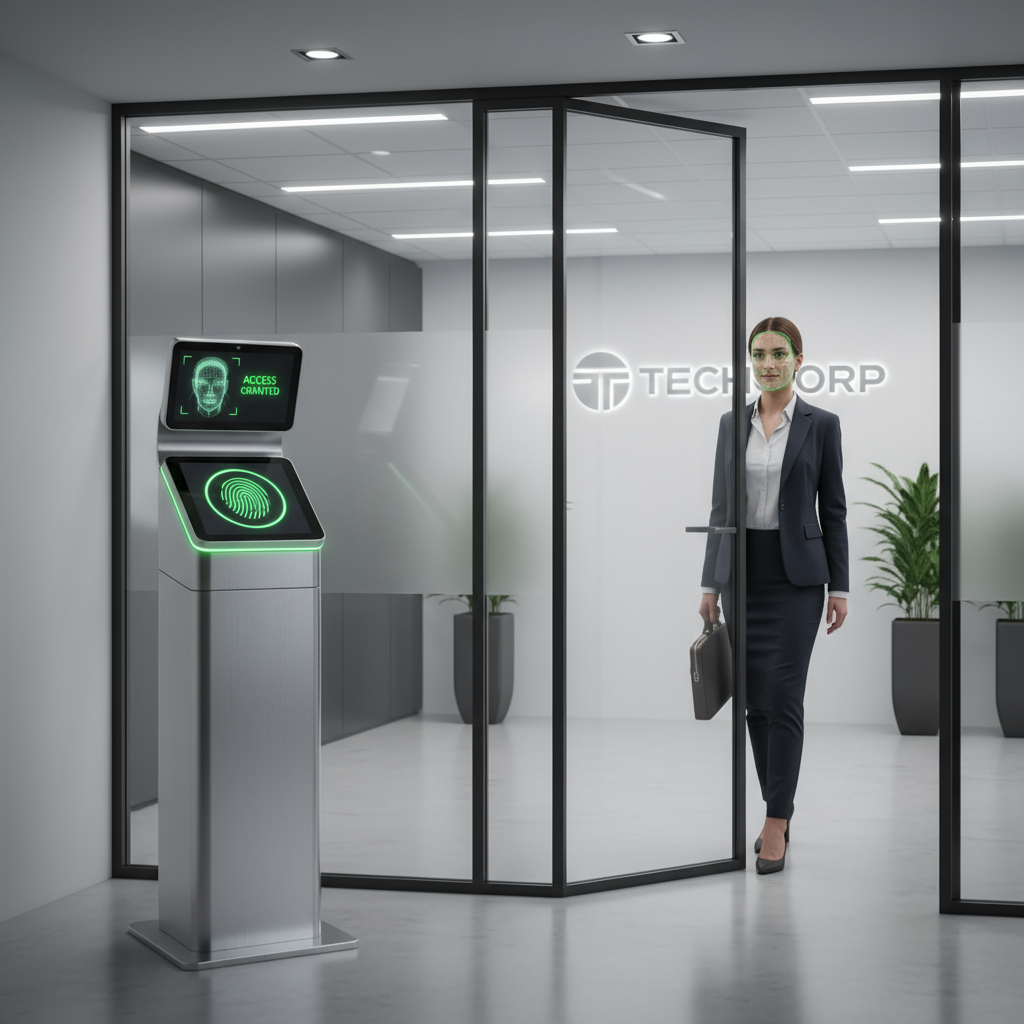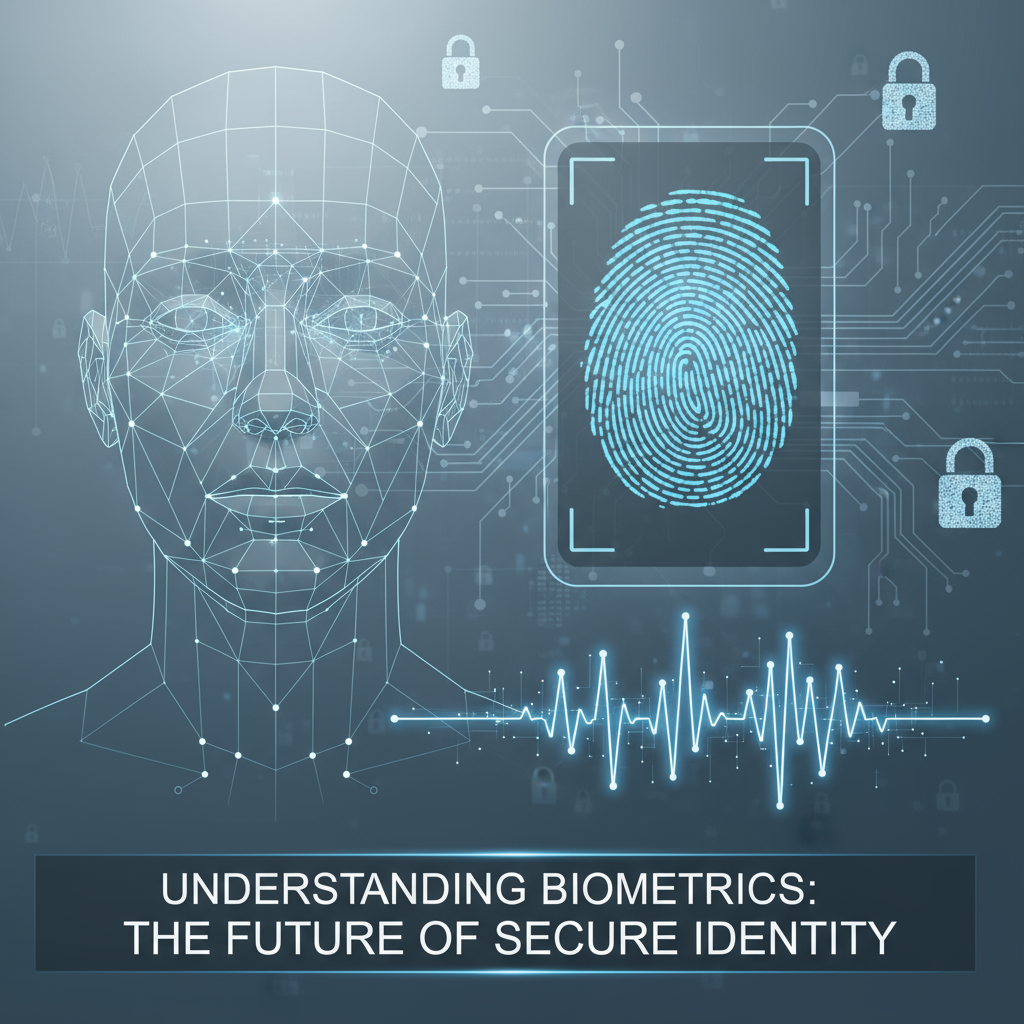Summary
Biometric technology is no longer just a futuristic concept — it’s a transformative force revolutionizing industries across the globe. From online gaming and financial services to physical access control systems, biometrics has redefined how identity verification and authentication are managed. This technology not only enhances security but also brings convenience, compliance, and efficiency to both businesses and consumers.
In this comprehensive guide, we’ll explore how biometric authentication is reshaping three major industries: Online Gaming and Betting, Access Control, and Financial Services — diving deep into the benefits, transformations, and future implications of each.
In today’s digital-first world, where data security and user privacy are paramount, organizations are turning to technologies that can accurately identify and authenticate individuals with minimal friction. Biometric authentication technology serves this purpose perfectly. It utilizes unique physiological and behavioral traits — such as fingerprints, facial features, iris patterns, or even voice recognition — to confirm a person’s identity.
Unlike passwords, PINs, or security tokens, biometric traits cannot be forgotten, lost, or easily duplicated. As a result, industries that depend heavily on trust, compliance, and security are adopting biometrics at a rapid pace.
This article explores three major industries undergoing transformation through biometric technology:
- The Online Gaming and Betting Industry
- The Access Control Industry
- The Financial Services Industry
Overview of Biometric Technology
What Is Biometric Technology?

Biometric technology refers to automated methods of recognizing an individual based on their biological or behavioral characteristics. Common biometric identifiers include:
- Physiological Biometrics: Fingerprints, facial features, iris or retina scans, palm veins, and DNA.
- Behavioral Biometrics: Voice recognition, typing rhythm, walking gait, or touchscreen interaction patterns.
How Does It Work?
The process typically involves:
- Data Capture: A biometric sensor (camera, fingerprint scanner, or microphone) collects the individual’s data.
- Feature Extraction: The system converts these captured features into digital templates.
- Storage and Comparison: The stored templates are compared to those provided during future authentication attempts.
Why Industries Are Turning to Biometrics
- Accuracy and Reliability: Biometrics provides a unique, non-replicable form of identity verification.
- Speed and Convenience: Users can authenticate instantly using their faces, fingerprints, or voices.
- Security: Eliminates risks tied to stolen passwords or lost access cards.
- Scalability: Works seamlessly across mobile devices, cloud systems, and physical access control systems.
As this technology matures, its adoption continues to surge across various industries, transforming how security and identification are managed.
Industries Being Transformed by Biometric Technology
Let’s take a closer look at how biometric technology is revolutionizing three major industries — each with its own challenges, opportunities, and benefits.
Online Gaming and Betting Industry

The online gaming and betting sector is a multi-billion-dollar industry that heavily depends on user verification, fraud prevention, and compliance with regulations. With millions of users accessing platforms daily, ensuring secure and frictionless identity verification has become crucial.
Biometric authentication has become a game-changer here, transforming user experience and security.
a. Enhancing Security
Security breaches and identity theft have been ongoing threats in online betting platforms. Biometrics drastically minimize these risks through:
- Fraud Prevention: By authenticating users through fingerprints, facial recognition, or voice patterns, only legitimate players can access their accounts. This prevents account takeovers and unauthorized access.
- Identity Verification: It eliminates the need for manually verifying documents or relying on usernames and passwords. Biometric verification ensures that each account belongs to a real, unique individual.
- Data Protection: Sensitive user data and financial details are better safeguarded when combined with biometric encryption, minimizing the chances of data breaches.
b. Improving User Experience
Beyond security, biometrics brings ease and convenience to the online gaming experience:
- Password-Free Access: Players can log in with just a fingerprint or face scan instead of typing complex passwords.
- Instant Account Access: Quick verification enhances the user journey, especially for mobile gamers who prefer seamless logins.
- Personalization: Biometric data can enable gaming platforms to tailor content and preferences, creating a more immersive and customized experience.
c. Regulatory Compliance
Many countries enforce strict regulations for online gambling platforms, requiring strong user authentication. Biometrics help ensure compliance with these requirements by providing secure and verifiable identification methods. This assists in preventing underage gambling and maintaining responsible gaming practices.
d. Building Trust and Loyalty
Trust is crucial in the gaming industry. When users know that their accounts are protected by biometric authentication, it builds confidence and loyalty. Platforms that integrate these technologies not only gain user trust but also enhance their brand reputation in a competitive market.
Access Control Industry

Access control systems, used in offices, residential complexes, data centers, and restricted zones, are witnessing massive innovation through biometrics. Traditional methods such as keys, cards, and passwords are being replaced by fingerprint scanners, iris readers, and facial recognition terminals.
a. Strengthening Security
- Reducing Unauthorized Access: Biometric systems validate identity based on unique human characteristics, reducing the risk of unauthorized entry.
- Eliminating Lost or Stolen Credentials: Unlike keys or cards, biometric traits can’t be misplaced or duplicated, which significantly enhances security.
- Audit Trails and Accountability: Every biometric access record creates a digital audit trail, enabling organizations to track who entered, when, and where. This transparency is essential for compliance and investigations.
b. Convenience and Efficiency
Biometric systems eliminate administrative burdens and improve user convenience:
- Faster Entry: Employees or visitors can quickly gain access through facial or fingerprint recognition, reducing waiting time.
- No Password Management: There’s no need to reset forgotten passwords or replace access cards.
- Reduced Human Error: Automated verification minimizes manual processing and entry errors
c. Adaptability and Integration
Modern biometric systems can easily integrate with other digital and physical security systems, including:
- Surveillance cameras
- Alarm systems
- IT networks and enterprise systems
They can be deployed across multiple access points — from office entrances to computer logins — ensuring unified security across all levels.
d. Scalability and Cost-Effectiveness
Once implemented, biometric access systems are easy to scale as an organization grows. New users can be added digitally without issuing additional hardware. This scalability, combined with minimal maintenance costs, makes biometrics a long-term cost-efficient solution.
e. Regulatory and Compliance Support
Industries such as healthcare, finance, and defense have stringent compliance standards. Biometric access control systems provide auditable, accurate data that help organizations meet these security mandates effectively.
f. Long-Term Benefits
Though the initial setup cost can be high, organizations benefit from significant long-term savings by eliminating card replacements, reducing security breaches, and streamlining administrative tasks.
Financial Services Industry

Among all industries, the financial sector has seen some of the most profound transformations through biometrics. With the rise of digital banking, mobile wallets, and contactless transactions, banks and financial institutions are integrating biometric technology to secure user authentication and simplify operations.
a. Strengthening Security and Reducing Fraud
- Secure Authentication: Banks use fingerprints, iris scans, and facial recognition to verify identity for transactions, ATM withdrawals, and mobile banking logins.
- Reduced Fraud: Biometric traits are nearly impossible to duplicate, drastically minimizing phishing and identity theft attempts.
- Mobile Banking Security: Smartphones equipped with biometric sensors ensure secure app access, reducing dependency on passwords or OTPs.
- Account Takeover Prevention: Even if credentials are leaked, biometric authentication ensures only the rightful owner can access their financial accounts.
b. Enhancing Customer Experience
In today’s fast-paced world, convenience is key. Biometrics provide frictionless customer journeys:
- Faster Transactions: Users can approve payments and transfers instantly using facial or fingerprint verification.
- Simplified Onboarding: New customers can complete KYC (Know Your Customer) processes quickly using facial recognition instead of manual paperwork.
- Improved Satisfaction: Secure and smooth interactions increase customer loyalty and reduce drop-offs during login or registration.
c. Compliance and Data Protection
- Regulatory Compliance: Biometric systems help banks comply with stringent regulations related to user authentication and data privacy.
- KYC Simplification: Biometric verification ensures accurate identification during account openings, preventing fraudulent identities.
- Audit Readiness: Biometric logs provide reliable records for financial audits and compliance inspections.
d. Efficiency and Cost Reduction
Automated biometric systems minimize manual verification efforts, reduce operational costs, and enhance employee productivity. Over time, this leads to more efficient customer service and secure financial ecosystems.
Key Benefits of Biometric Technology Across Industries
- Enhanced Security: Unique identifiers prevent unauthorized access and identity fraud.
- Speed and Convenience: Quick authentication replaces cumbersome passwords or physical credentials.
- Regulatory Compliance: Biometrics helps industries adhere to local and international security standards.
- Cost Efficiency: Reduced administrative workload and fewer security breaches save significant resources.
- User Trust: Consumers gain confidence knowing their data and identity are securely protected.
Challenges and Considerations
While biometrics offer numerous benefits, there are challenges that must be addressed:
- Privacy Concerns: Storing biometric data requires stringent data protection measures to prevent misuse.
- Implementation Cost: High-quality sensors and infrastructure may require upfront investment.
- Accuracy Issues: Environmental factors like lighting, device quality, or aging may affect performance.
- Regulatory Hurdles: Compliance with privacy laws like GDPR or India’s DPDP Act is essential.
Organizations must ensure that biometric systems are ethical, transparent, and compliant with all data protection norms to maintain user trust.
Getting Started with Biometric Technology
For organizations looking to adopt biometric systems, here’s a roadmap:
- Identify Use Cases: Determine where biometric authentication can enhance operations — access control, online verification, or fraud prevention.
- Select Biometric Modalities: Choose suitable identifiers like facial, fingerprint, or iris recognition based on security needs.
- Integrate with Existing Systems: Ensure seamless integration with IT, HR, or financial platforms.
- Prioritize Data Privacy: Encrypt biometric data and adhere to privacy regulations.
- Train Staff and Educate Users: Promote awareness about how biometric systems function and their benefits.
Cloud-based platforms now offer multi-factor authentication and biometric verification combined in one secure, no-code system — enabling businesses to adopt biometrics rapidly and cost-effectively.
Conclusion
Biometric technology is not just improving security — it’s redefining how industries operate. From gaming platforms offering password-free logins to financial institutions ensuring secure mobile transactions and enterprises managing access control seamlessly, biometrics has become the foundation of modern identity management.
As industries continue to digitize, the adoption of biometric systems will only accelerate, creating a future where security, convenience, and trust go hand in hand.
The question is no longer if your organization should implement biometrics — but how soon you can leverage its potential to transform your operations.
FAQs
What is biometric authentication?
Biometric authentication uses unique physical or behavioral characteristics like fingerprints, facial features, or voice to identify individuals securely.
How are biometrics used in online gaming?
They verify user identities, prevent fraud, and ensure compliance with gambling regulations by enabling quick, secure logins.
Are biometric systems secure from hackers?
Yes, when properly encrypted. Modern systems store biometric templates, not raw data, making it extremely difficult to misuse.
Which industries benefit most from biometrics?
The financial, security, healthcare, and gaming industries benefit significantly from enhanced security and convenience.
What are the main challenges of implementing biometric systems?
Data privacy, integration costs, and compliance with evolving data protection laws are the primary challenges organizations face.
Debabrata Behera is a passionate blogger who writes about digital trends, personal growth, and practical insights, helping readers stay informed, inspired, and ready to achieve success in life.




